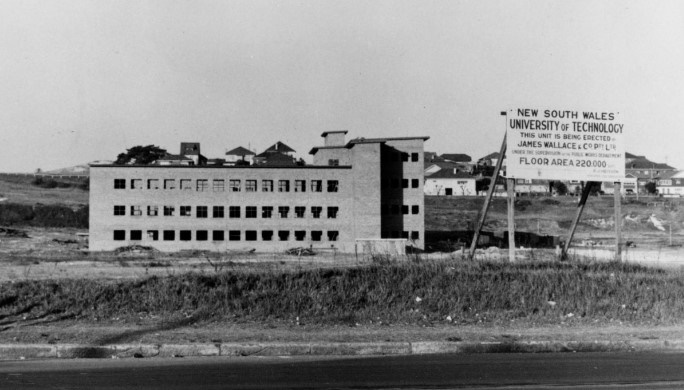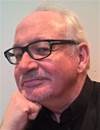Preamble
The Australian Computer Society (ACS) was formed 50 years ago, when the various state computer societies joined forces.
To mark the occasion, the ACS has initiated a heritage project to honour the many individuals who have contributed to the growth of the ICT profession in Australia.
At the heart of the project is a history of computing in Australia. It is not just a history of the ACS, but the history of a profession.
Australia has the longest computing history of any country, excepting the US and the UK, and CSIRAC in the Museum of Victoria is the oldest computer still in existence.
Chapter 19: Sydney University and UNSW lead the way
Australia’s universities have always been major users of computers. There are over 40 universities in Australia today, but in 1960 there were just ten. Until World War II there were just six, one in each state capital.
In 1963, there were just 18 full-time computer staff across all Australia’s universities.
The first universities to use computers were the University of Sydney and University of NSW. This article looks at computing at those universities until the 1970s. Next week’s article will look at early computing efforts at other universities. (For the foundation of computing at the University of Sydney and University of NSW, see Chapters 5 and 6 of the ACS Heritage Project.)
The University of Sydney
The University of Sydney is Australia’s oldest, founded in 1850. It was home to Australia’s first computer, Trevor Pearcey’s famous Mark 1, in 1949. The Mark 1 is better known as CSIRAC, which is what it was renamed after it was relocated to Melbourne in 1956.
SILLIAC, installed in 1956, was a major advance over the Mark 1. It was built at Sydney University to the design of ILLIAC, an important early US computer. It was replaced by an English Electric KDF9 in May 1964, after which time it served as an I/O processor for the newer machine until it was decommissioned in 1968. In 1967, a Control Data 1700 and a DEC PDP-8 were also installed.
The KDF9 was one of the first British solid state computers. Only 29 of these advanced machines were ever built, with the university receiving one of the first. Its purchase was made possible through a gift of £250,000 by Dr Cecil Green, a Vice President and early investor in semiconductor company Texas Instruments, and noted philanthropist.
John Bennett is the most important figure in the early history of computing at the university. But the first computer-related courses in any university in Australia were those taught by Trevor Pearcey at Department of Mathematics in 1947 to 1952, in the early years of the Mark 1 computer. They were extra-curricular courses in the theory of computation, computing practices and the principles of programming.
These were very early and very basic. It was not until the installation of SILLIAC in 1956 that further courses were introduced. These courses, run by John Bennett, were also extra-curricular, and designed to introduce staff and students to the practicalities of computing.
John Bennett said that because his courses were not part of any degree, the numbers attending dropped off at exam time.
In 1959, Sydney University introduced Australia’s first academic course in computing, a Diploma in Numerical Analysis and Automatic Computing. The name was later changed to the Diploma in Computer Science, because it was thought that ‘numerical analysis’ put people off. Bennett became the university’s Professor of Physics (Computing) in 1961, which means he was the first academic in Australia in computer science.
The Basser Computing Department within the university’s School of Physics was named after Adolph Basser, the benefactor who funded the purchase of SILLIAC. In 1971, it was split in two to form the Basser Computing Centre, which moved to its own building in 1972, and the Basser Department of Computer Science. It has now been expanded into the School of Information Technologies, with Adolph Basser’s name living on in the Basser Seminar Series, which specialises in innovative information technologies. Bennett was appointed to the new Chair of Computer Science in 1982.
Many people cut their computing teeth on the SILLIAC. The university’s computing laboratory became an important source for the distribution of computing expertise throughout the country during the next 20 years. Many of the students who graduated under Bennett were appointed to chairs in computer science at other universities throughout the country set up their own academic departments of computer science and computing centres or their equivalents.
The University of NSW
The University of NSW (called the NSW University of Technology until 1957) was established in 1949 by the New South Wales government in response to what it saw as a shortage of scientists and engineers, highlighted during World War II.
The university established an Institute of Nuclear Engineering in 1954 with a grant of £125,000 from the state government, intended to examine the use of nuclear power. An electronic computer was regarded as essential to the task, with the advantage that it could be used by other areas of the university. The head of the School of Electrical Engineering, Professor Rex Vowels, planned to build a large computing department, and the University Council decided in late 1954 to use some of the grant money to purchase a computer.
UTECOM was installed at around the same time as SILLIAC was installed at the University of Sydney, in September 1956. It was a commercial machine, an English Electric DEUCE, and was commissioned in the United Kingdom before being shipped to Australia.
UTECOM was installed in the Department of Electrical Engineering, where it was managed by lecturer Ron Smart until 1961, when he left to join Remington Rand. It had a major upgrade in 1963, when a new hardware interface was designed to connect a Siemens teleprinter. Enhancements were also made to the magnetic drum storage – the UTECOM and the other DEUCE machines had the only movable head magnetic drums ever built.
In 1961, the university bought an IBM 1620, which was named DUCHESS, for £500,000. It was primarily used by the Traffic and Highway Engineering School, and was also used by the university administration for payroll. Another IBM 1620 was bought by the School of Chemical Engineering.
In 1962, a Department of Computing was established as one of four departments when the School of Electrical Engineering was reorganised. It was to be renamed the Department of Computer Science in 1972. UTECOM remained the main workhorse, serving ten years until it was replaced by an IBM 360/50 in October 1966. In 1967, the Chemistry Department and Electrical Engineering Department each installed a DEC PDP-8.
Academic teaching in computer science at the University of NSW was slow to get started, but accelerated with the appointment of Murray Allen as foundation Professor of Electronic Computation and director of the Digital Computing Laboratory in 1965.
Allen, as a PhD student at the University of Sydney, had been the chief designer of SNOCOM for the Snowy Mountains Hydroelectric Authority. He subsequently went to the University of Adelaide, where he was part of the Cirrus design team, then worked briefly with Control Data in the USA.
Previously published:
Chapter 18: Computing in the Australian Government
Chapter 17: Trevor Pearcey and the birth of CSIRONET
Chapter 16: Enter the minicomputer – DEC comes to Australia
Chapter 15: The IBM S/360 in Australia
Chapter 14: IBM redefines the computer industry
Chapter 13: Control Data Australia (part II)
Chapter 12: Control Data Australia (part I)
Chapter 11: The Australian Computer Society
Chapter 10: Five Computer Societies
Chapter 9: Australian made, Australian designed
Chapter 8: Australia's Computer Industry in 1962
Chapter 5: SILLIAC and the Snowy Mountains Scheme
Chapter 3: Harry Messel and the birth of SILLIAC
Chapter 2: The first Australian Computer Conference
Chapter 1 -The start of Australia’s computing history
Veteran ICT journalist Graeme Philipson is researching and writing the Heritage Project book, which is due for release on the 50th anniversary of the formal incorporation of the ACS, on 3 October 2017.
The project also involves the creation of a ‘virtual museum’, cataloguing hardware and other artefacts, and collecting and curating documents on the history of the industry, including oral histories of as many people as possible.
Please get in touch with Graeme if you would like to contribute, at [email protected]
Do you have early memories of the ICT industry in Australia? Help us make history by sending us your story! Record or write your memories to be included in our historic ACS Heritage Project. Details here.










